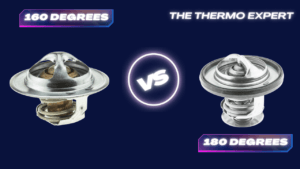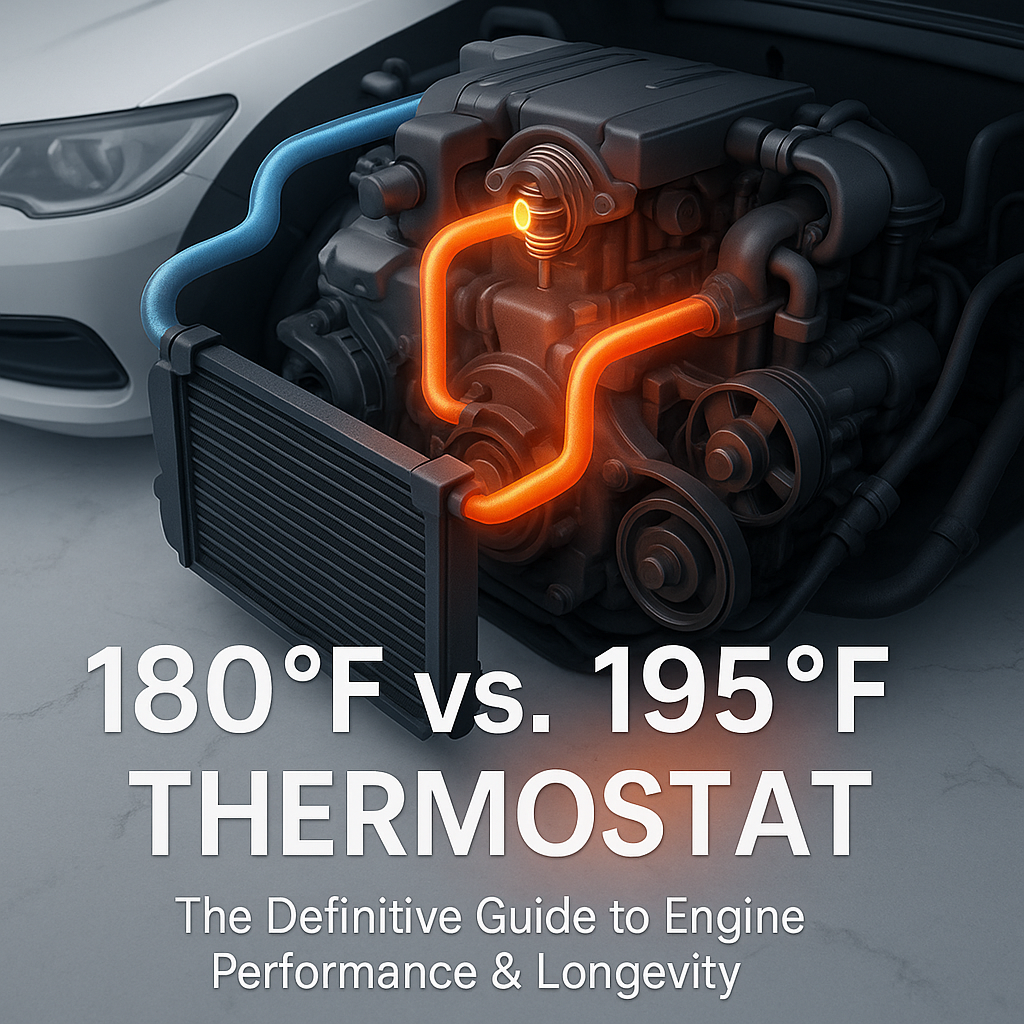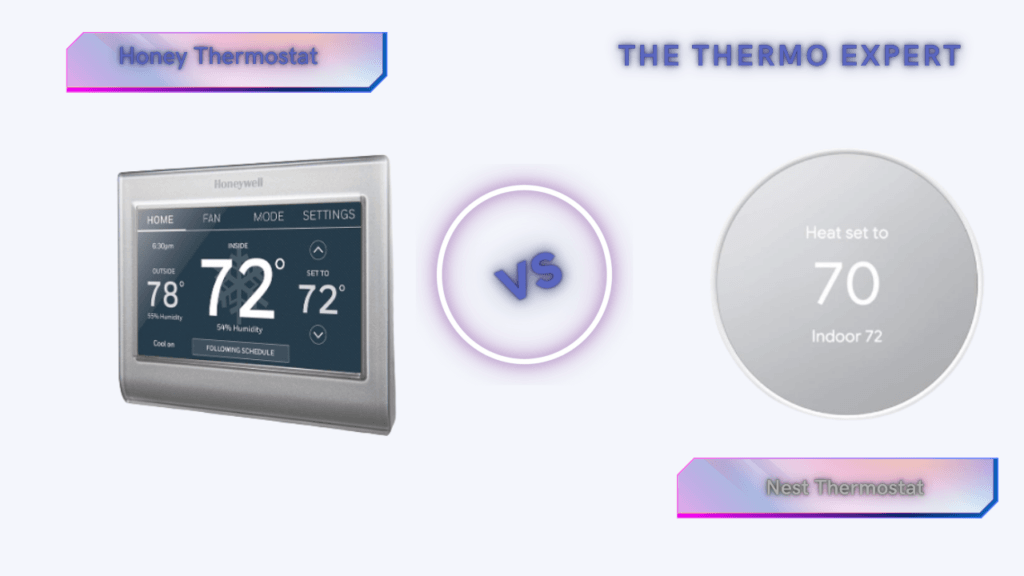160° vs. 180° Thermostat: The Ultimate Performance Showdown
In the world of performance tuning, few components generate as much debate as the humble engine thermostat. This small, crucial valve dictates your engine’s minimum operating temperature, and swapping it out is one of the most common first mods for enthusiasts seeking to unlock more power. The two most popular performance options are the 160-degree and 180-degree thermostats, but choosing between them is more complex than simply “cooler is better.”
This in-depth guide will demystify the choice. We’ll explore the significant engineering trade-offs between these two temperatures, covering their impact on everything from raw horsepower and fuel efficiency to engine wear and daily drivability. By the end, you’ll understand the science and be able to make an informed decision for your specific build and climate.
The Quick Verdict: Which Thermostat is Right for You?
For most daily-driven, stock, or lightly modified cars, the 180°F thermostat is the superior choice. It provides a safe reduction in temperature for a greater performance margin without the significant drawbacks of running the engine too cold. The 160°F thermostat is a specialized part for high-compression, forced-induction (turbo/supercharged), or dedicated race cars, especially in hot climates, and it absolutely requires a corresponding ECU tune and fan adjustments to be effective.
Understanding the Thermostat’s Critical Role
Before comparing, let’s be clear on what a thermostat does. It’s a temperature-sensitive valve that regulates coolant flow. The number on the thermostat (e.g., 160°F) is the temperature at which it *starts* to open. It is not the constant temperature your engine will run at. The actual operating temperature will typically be 15-20 degrees hotter, as the thermostat modulates to maintain stability.
Most factory thermostats are set even higher, often at 195°F or more. Engineers choose this higher temperature for reasons of efficiency and emissions. Swapping to a 160°F or 180°F unit is a deliberate choice to run the engine cooler than designed, which comes with both benefits and consequences.
The Case for the 180-Degree Thermostat: The All-Rounder Upgrade
Think of the 180°F thermostat as the sensible, balanced performance upgrade. It’s a popular first mod because it offers a tangible safety margin for performance driving without severely compromising the engine’s daily-driving manners.
Key Benefits of a 180°F Thermostat:
- A Safer Performance Window: By beginning the cooling process sooner, a 180°F thermostat provides a greater buffer against engine knock (detonation). This gives tuners more room to safely add ignition timing, which is a primary source of horsepower gains.
- Better Efficiency Than a 160°F: An engine with a 180°F thermostat can still reach its “closed-loop” operating temperature relatively quickly. In this mode, the Engine Control Unit (ECU) uses data from the oxygen (O2) sensors to fine-tune the air-fuel ratio for maximum efficiency. This means better gas mileage and cleaner emissions compared to a colder setup.
- Reliable Cabin Heat: For anyone not living in a year-round hot climate, this is a major factor. The coolant still gets hot enough to provide strong performance from your car’s heater during the winter months.
- Reduced Risk of Overcooling: It keeps the engine in a healthy temperature range, hot enough to ensure engine oil flows properly and can burn off harmful moisture and fuel contaminants.
Who Should Use a 180°F Thermostat?
- ✅ Daily-driven vehicles with performance aspirations.
- ✅ Lightly modified cars (cold air intake, cat-back exhaust, basic ECU tune).
- ✅ Owners in moderate to warm climates looking for an extra safety margin.
- ✅ Most naturally aspirated V8s and V6s used for spirited street driving.
The Case for the 160-Degree Thermostat: The Hardcore Specialist
The 160°F thermostat is not a casual upgrade; it’s a dedicated performance part for specific, demanding applications. Its goal is to provide the maximum possible cooling headroom for engines pushed to their absolute limit.
Major Benefits of a 160°F Thermostat:
- Maximum Knock Prevention: This is the primary reason for its existence. For engines with high compression, superchargers, or turbochargers running high levels of boost, keeping temperatures down is critical. A cooler engine is less prone to detonation, allowing for much more aggressive tuning of spark timing and boost levels, unlocking significant horsepower.
- Essential for Hot Climates & Track Use: In places like Arizona, Texas, or Florida, or during a 20-minute track session, ambient heat is a major enemy. A 160°F thermostat starts the cooling process as early as possible, giving the radiator and fans a head start in the constant battle against heat soak.
The Serious Drawbacks of a 160°F Thermostat on a Street Car
Installing a 160°F thermostat without proper supporting mods can do more harm than good:
- Prolonged “Open-Loop” Mode: The ECU may never receive the signal that the engine is fully warm. It will remain in its “warm-up” phase, ignoring O2 sensor data and running a permanently rich fuel mixture. This kills fuel economy, fouls spark plugs, and can wash oil from cylinder walls.
- Increased Engine Wear & Oil Sludge: This is a critical risk. Engine oil needs heat (~200°F+) to evaporate condensation and unburnt fuel. Running too cool allows this moisture to accumulate, leading to the formation of engine-killing sludge. Furthermore, internal components like pistons are designed to expand to a specific size at operating temperature. Running too cold can result in improper clearances and accelerated wear.
- Requires a Full Tune: To reap any benefit, the ECU must be tuned to adjust fueling tables, and the electric fan activation temperatures must be lowered. If your fans are still programmed to turn on at 210°F, your low-temp thermostat is doing nothing while you’re sitting in traffic.
- Weak to Non-Existent Cabin Heat: In any cool climate, your heater will be lukewarm at best.
Who Should Use a 160°F Thermostat?
- ✅ Heavily modified engines with forced induction (supercharged/turbocharged).
- ✅ Dedicated track, drag, or racing vehicles.
- ✅ Owners in consistently hot climates (e.g., southern Florida) who *also* have supporting tunes and fan adjustments.
160°F vs. 180°F: Head-to-Head Comparison Table
| Feature | 160-Degree Thermostat | 180-Degree Thermostat |
|---|---|---|
| Primary Goal | Maximum Cooling Headroom | Balanced Performance & Safety |
| Knock Prevention | Excellent | Good |
| Fuel Efficiency | Poor (without tune) | Good |
| Engine Wear Risk | Higher (sludge, clearances) | Low (as designed) |
| Cabin Heating | Poor | Good |
| Requires Fan/ECU Tune? | Yes, Absolutely | Recommended, but not essential |
| Ideal User | Hardcore Racer / Forced Induction | Daily Driver / Spirited Enthusiast |
Essential Gear for Your Cooling System Upgrade
A new thermostat is only one part of the equation. To ensure your cooling system is reliable, consider these essential tools and products.

Mishimoto 180°F Racing Thermostat
A trusted name in performance cooling, Mishimoto thermostats are built for reliability under stress. This 180°F unit is a perfect upgrade for most enthusiast vehicles, providing a tangible safety margin for performance driving.
Check Price on Amazon
Hypertech 160°F PowerStat Thermostat
For those with a high-horsepower, forced-induction build that demands the lowest possible operating temperature, this Hypertech 160°F thermostat is a popular choice among serious tuners and racers.
Check Price on Amazon
Engine Ice High Performance Coolant
Standard coolant works, but a high-performance coolant like Engine Ice offers superior heat transfer and corrosion protection. It’s an excellent way to maximize the efficiency of your entire cooling system, regardless of your thermostat choice.
Check Price on AmazonFrequently Asked Questions (FAQ)
Will a 160° thermostat fix my overheating problem?
Absolutely not. A thermostat only sets the minimum temperature. If your car is overheating, it means your cooling system (radiator, fans, etc.) cannot get rid of the heat being produced. A colder thermostat will only delay when the overheating starts; it will not prevent it. You must fix the root cause.
Do I have to tune my fans if I install a colder thermostat?
To get the full benefit, yes. If you install a 160°F thermostat but your fans are still set to turn on at 210°F, the thermostat will be wide open long before the fans provide any help in low-speed situations, partially defeating the purpose.
Is there a noticeable horsepower difference between the two?
Not from the thermostat itself. The horsepower gains come from the more aggressive ignition timing that a cooler engine allows a tuner to implement. The 160°F thermostat simply provides a larger window for that tuning.
What about the stock 195°F thermostat?
The 195°F thermostat is designed for optimal efficiency and emissions on a stock vehicle. While the 180°F thermostat is a popular first step for performance, it’s crucial to understand how it compares to the factory standard. You can learn more in our detailed 180°F vs. 195°F thermostat guide.




